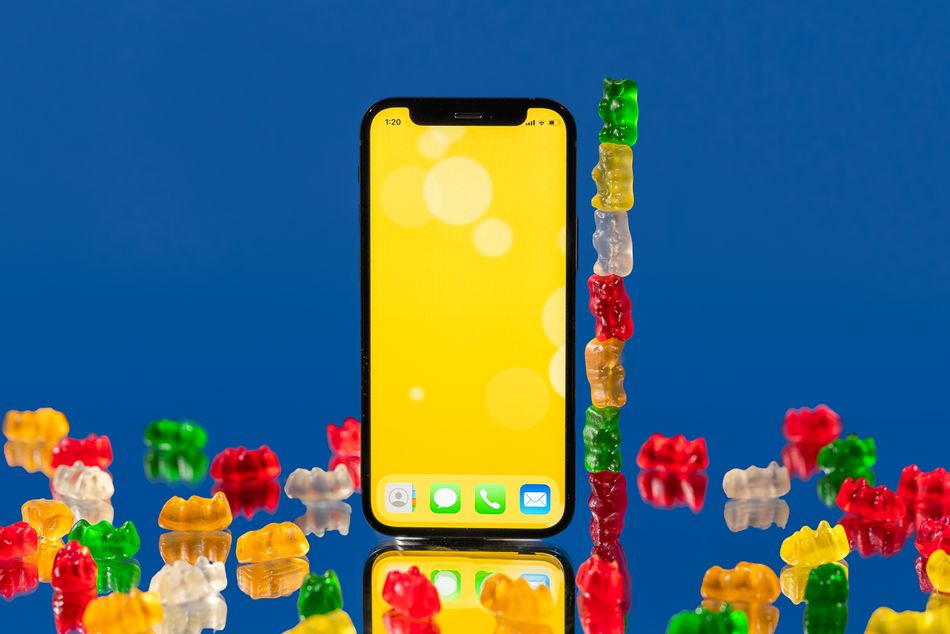2021 isn’t even halfway over, and iPhone rumors are already abundant for future 2022 and 2023 models. We’re talkin’ better camera sensors, an under-display Face ID system (yes, that means no more notch), and a canceled iPhone design.
Here’s what might be on deck for Apple’s family of next-generation iPhone flagships.
Goodbye, iPhone mini
According to well-known Apple analyst Ming-Chi Kuo, the company’s “mini” lineup will end with the 5.4-inch iPhone 13 mini. In a research note seen by MacRumors, Kuo predicts the 2022 iPhones (a.k.a. the iPhone 14 line) will include “high-end 6.7-inch and 6.1-inch” models, as well as “lower-end 6.7-inch and 6.1-inch” options.

The battery life sucked, anyway.
Image: zlata ivleva / mashable
I didn’t have all that many complaints when I reviewed the iPhone 12 mini. It’s a powerful phone that works just as well as the iPhone 12 and 12 Pro, but its battery life is awful. Plus, staring at such a small display can get irritating.
Apple’s decision to discontinue its iPhone mini doesn’t come as a shock, though. In January, a report from Consumer Intelligence Research Partners said the mini smartphone only accounted for 6 percent of total iPhone sales in October and November of 2020.
Finally, some upgraded camera systems
Kuo also says it’s possible the iPhone 14 Pro and Pro Max could include a 48-megapixel camera sensor, which would be a significant change from the 12-megapixel sensors included every year. He anticipates this upgrade would allow users to record video in 8K, a feature he points out is “more suitable for AR/MR devices.”
There are a couple of things to unpack here, so let’s start with that potential 48-megapixel camera.
Even though it’s not confirmed, the updated iPhone camera sensor would make sense considering Samsung’s Galaxy S20 and S21 lineups pack 64-megapixel cameras and already shoot in 8K. Meanwhile, the S20 Ultra and S21 Ultra each come with a whopping 108-megapixel sensor. Compared to its competition, Apple is long overdue for new camera systems.

The iPhone is long overdue for new cameras.
Image: zlata ivleva / mashable
Then there’s that augmented reality/mixed reality comment from Kuo. With Apple’s mixed-reality headset reportedly coming very soon, it makes sense for the company to throw in features related to its MR initiative.
Kuo also claims the 2023 iPhone will include a periscope lens which would offer enhanced optical zoom up to 10x. Currently, the iPhone 12 has 2x optical zoom, while the iPhone 12 Pro and 12 Pro Max have a range of 4x and 5x, respectively.
R.I.P. notch
Speaking of 2023 iPhones, Apple might finally retire the notch. In an investors’ note obtained by MacRumors, Kuo says the company plans to introduce an under-display Face ID system.
Apple first implemented the notch in the iPhone X when it ditched Touch ID in favor of Face ID, allowing users to unlock their iPhones using facial features. To make that work, Apple packed its TrueDepth camera system into the much-loathed notch.
But if the company is able to figure out a way to include those parts underneath the display instead, it could make way for an unblemished full-screen iPhone. However, as MacRumors points out, Kuo previously claimed the high-end 2023 model would include an under-display fingerprint scanner instead of Face ID. So maybe plans have changed.

So long, notch. You won’t be missed.
Image: zlata ivleva / mashable
While Kuo’s latest note makes no mention of that fingerprint scanner and leans more towards Face ID, it’s still unclear if the feature will be reserved strictly for the pricier iPhone Pro and Pro Max versions.
Apple might not even wait until 2023 to get rid of the notch. Last month, Kuo said Apple could include a hole-punch camera on some of its 2022 iPhone models. But he didn’t share any specifics as to how Face ID would work with that design. In another investors’ note by way of MacRumors, Kuo said Apple would start implementing the hole-punch design on high-end 2022 iPhones.
It’s possible Apple might not follow through with some or all of these rumored plans once 2022 and 2023 roll around. But after years of incremental (and underwhelming) iPhone updates, I’d be content if just one of these new features made it through to the final round.
WATCH: Apple has a lot of new products, so we ranked them

